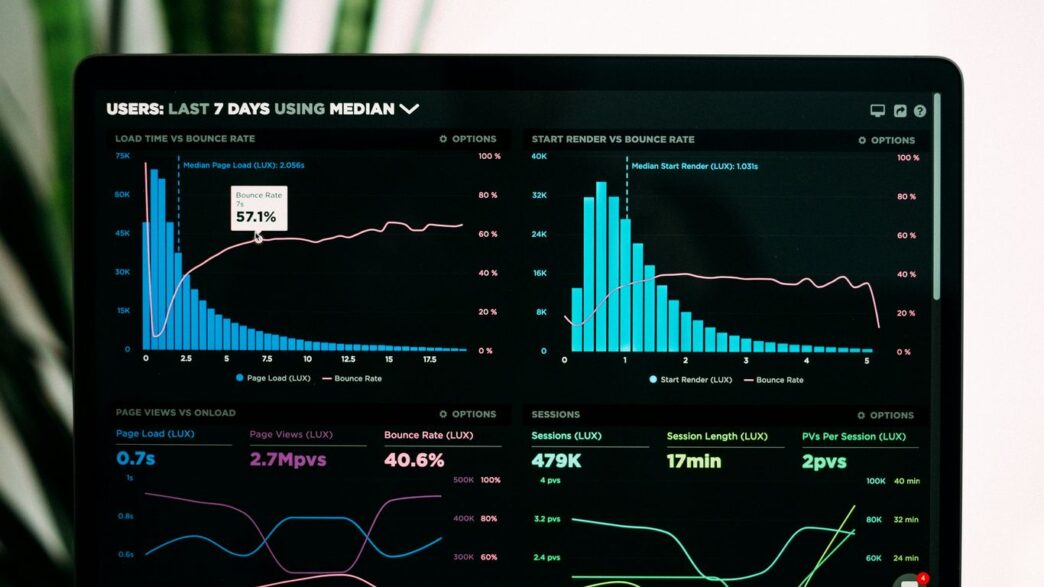AI startup funding in 2025 is making headlines for all sorts of reasons. There’s more money flowing into these companies than ever, but it’s not just about who gets the biggest check. Startups are using new tools—like AI-powered platforms—to find investors faster and smarter. Regulations are getting tighter, and everyone’s paying attention to sustainability. If you’re a founder or just curious about how all this works, it’s a wild mix of big opportunities, new risks, and some fresh ways to raise cash. Here’s what’s shaping the scene right now.
Key Takeaways
- AI startup funding hit new records in 2025, with huge deals and more global participation than before.
- AI tools are helping startups and investors connect, making the process faster and more fair for everyone.
- Late-stage funding rounds are bigger, but investors are pickier and want proof that startups can really grow.
- Alternative funding options like crowdfunding and government grants are on the rise, giving founders more choices.
- Regulations and a focus on sustainability are pushing startups to be more careful—and creative—about how they raise and use money.
Record-Breaking AI Startup Funding Rounds in 2025
AI investments hit new records in 2025. Everywhere you look, the numbers are up, the checks are bigger, and it really feels like the industry finally convinced even the most skeptical investors. Let’s break down what happened, who got the most funding, and which parts of the world are turning into real hotspots for AI dealmaking.
Major Players and Noteworthy Deals
The headline this year has to be OpenAI’s monster $40 billion late-stage round, proving just how much money is in play for the biggest names out there (late-stage funding peaked). But it isn’t just OpenAI hogging the spotlight:
- Quantum AI got a huge Series B to boost its quantum computing projects.
- NeuralNet Inc. raised hundreds of millions aimed at overhauling healthcare AI systems.
- SecureAI landed one of the largest Series C rounds in cybersecurity, making it clear the industry has matured well beyond chatbots and novelty demos.
| Company | Round | Amount Raised | Sector |
|---|---|---|---|
| OpenAI | Late-stage | $40B | Generative AI |
| Quantum AI | Series B | $950M | Quantum Computing |
| NeuralNet Inc. | Series C | $620M | Healthcare AI |
| SecureAI | Series C | $510M | Cybersecurity |
Industry Verticals Attracting the Most Capital
2025 wasn’t just about one flavor of AI. The money is spreading into every corner of the tech world:
- Healthcare and Life Sciences: Machine learning for diagnostics, drug discovery, and patient monitoring is pulling in big rounds.
- Cybersecurity: The arms race online means even more funding for better, smarter protection.
- Fintech: AI tools for fraud prevention, automated trading, and compliance are hotter than ever.
- Agriculture and Environmental AI: With governments and big investors looking for real climate solutions, AI startups in these areas are finally getting the spotlight.
Geographic Trends in AI Investments
The United States is still the top choice for big checks, especially for startups based in San Francisco, Boston, and New York. But there are some changes worth noting:
- China continues to rise, especially in computer vision and smart manufacturing.
- The European Union is catching up thanks to strong public funding, with Germany and France leading the charge.
- Emerging regions in Southeast Asia and the Middle East saw more first-time mega-rounds in 2025 than ever before.
A pattern is clear: AI funding is going global, and deals aren’t concentrated in just one or two zip codes anymore. While homegrown talent in the US receives the largest share, it’s worth watching accelerated expansion in Europe and Asia as well. For more detailed numbers, venture platforms are now tracking these trends quarterly to help founders compare their region’s activity against what’s happening worldwide.
AI-Powered Platforms Transforming Fundraising Strategies

Fundraising for startups has always been tough, but in 2025, it’s honestly like everyone is relying on AI. AI-powered platforms are changing how young companies find investors, connect with them, and actually get the deals done. If you’re building a pitch deck or scrambling for those first introductions, chances are, you’ve at least tried out one of these platforms. Here’s what’s really going on behind the scenes.
How AI Matches Startups with Investors
Modern fundraising feels way less random now. AI tools analyze startup data—business models, tech stacks, market size, even how fast a team is moving—to figure out which investors are actually likely to care. No more cold-emailing 150 people hoping one bites. Instead, matching algorithms zero in on:
- Investment theses and past deals of thousands of VCs
- Actual portfolio performance and risk profiles
- Startup growth metrics and stage relevance
A real perk: this matching is happening super fast, almost in real time. Some platforms even send founders alerts when a new investor profile matches their company.
Data-Driven Decisions in Venture Capital
Venture capital firms are way more analytical now. These days, around 60% of VCs use AI platforms to help decide who gets a meeting and who gets the cold shoulder. The result? Fewer gut-feeling bets, more signal, less noise. Platforms pull in:
| Metric | Typical Pre-AI Analysis | AI-Supported Analysis (2025) |
|---|---|---|
| Startup Screening Time (hrs) | 10+ | 2-3 |
| Investor-Startup Match Rate | ~10% | 28% |
| Due Diligence Duration (wks) | 6 | 3 |
Because algorithms crunch such huge amounts of info, smaller and newer startups aren’t lost in the shuffle. Tools even predict exit chances or pin down weak spots before you walk into a pitch. You can read about devices that reshape business tech, like the iPager announcement earlier this year.
Reducing Bias and Increasing Efficiency
Founders talk a lot about how AI gives everyone a fairer shot. Old-school fundraising relied a lot on who you know (and, honestly, what you looked like). Modern AI platforms aim to:
- Score pitches on merit, not background or network
- Pull in startups from a bigger range of countries and markets
- Streamline introductions using insights, not just referrals
That’s not a magic fix—bias can creep in if the data is bad—but it’s a step towards leveling the playing field. With investors using data from more and more sources, the overall process feels less like a maze for first-time founders and more like a real marketplace.
In short, if you’re building in AI, you’re expected to use AI to raise money now. And that’s shifting the whole vibe of startup fundraising—making it faster, a bit fairer, and a lot more data-driven.
Opportunities and Risks in Late-Stage AI Funding
Late-stage funding is the new frontier for AI startups in 2025. This year, more companies than ever before are competing for big-ticket investments, and it’s not just tech giants getting in on the action. Investors are putting serious money into AI startups that have proven their business models, creating both new possibilities and some real headaches for founders. Let’s break down what’s happening right now.
Boom in Series A and Series B Valuations
In 2025, Series A and Series B rounds for AI companies are through the roof compared to previous years.
| Funding Round | Median Valuation (2025) | Median Valuation (2024) |
|---|---|---|
| Series A | $50 million+ | $37 million |
| Series B | $120 million+ | $90 million |
Key reasons for this surge:
- Startups are showing clear paths to revenue and scalability.
- Demand for generative AI and automation tools keeps rising.
- Investors are chasing fewer deals, which drives up prices for promising startups.
But with higher valuations comes more pressure. If you’re a founder, you now have to hit really ambitious targets to keep investors happy.
Mega-Rounds and Their Impact on Innovation
Mega-rounds, which usually mean $100 million or more, are reshaping the playing field:
- Capital is flowing into a small pool of startups with a proven track record.
- These large checks help startups scale quickly—think aggressive hiring, global launches, mass-market expansion.
- The downside? There’s a risk of the market becoming top-heavy, where only a handful of companies dominate and smaller players get squeezed out.
- Startups that lock in mega-rounds must show constant progress or risk tough board meetings (or worse, layoffs and restructures).
Investor Confidence and Market Validation
Investor confidence is at an all-time high for AI. You can see it in how late-stage dollars are being spent:
- Many investors are aiming for AI unicorns to go public in 2026.
- Late-stage AI startups are landing contracts with Fortune 500 firms, which is a green flag for big funds.
- There’s optimism that the next wave of IPOs will bring even more capital into the sector.
But the risks are obvious too:
- Sky-high expectations mean even small missteps get amplified.
- The market may grow crowded at the top, making it tough for new ideas to break through.
- If the hype cools or a few big players stumble, funding could dry up quickly.
In the end, late-stage AI funding in 2025 offers a shot at tremendous success—but the pressure to perform is just as enormous. Startups tackling this stage with a clear plan and strong growth numbers are the ones most likely to make it through the next big shakeup.
Alternative Financing Models Gaining Momentum
Startups looking for funding in 2025 are no longer just pitching VCs and hoping for the best—there’s been a real explosion in new ways to raise money. Crowdfunding, decentralized finance, revenue-based capital, and government grants are quickly going mainstream. For a lot of founders, this is changing how they build and scale their businesses, cutting down on reliance on traditional venture capital, which has always been competitive (and sometimes pretty exclusive).
Crowdfunding and Decentralized Finance Solutions
Crowdfunding isn’t just for gadgets and cool tech anymore—AI companies, even the ones with tough ideas, are getting funded. Sites like Kickstarter and Indiegogo have seen a 35% uptick in use just this past year. Here’s why founders like it:
- Direct access to customers—sometimes even before a real product exists.
- Lower pressure for hypergrowth, since backers are fans, not investors demanding exits.
- Early user feedback to tweak the product.
At the same time, decentralized finance (DeFi) is really shaking up startup funding. Blockchain-based platforms are giving startups the ability to tap global investors, avoid gatekeepers, and often do it all with lower fees. This goes hand-in-hand with the fintech boom (Fintech, the fusion of finance and technology), which is transforming access and inclusion across the financial world.
Here’s a look at recent growth:
| Model | Usage Growth in 2025 |
|---|---|
| Crowdfunding | +35% |
| DeFi Platforms | +120% |
Revenue-Based and Non-Dilutive Capital
A lot of AI startups are burned out by giving up equity for every dollar raised. So, revenue-based financing (RBF) is getting attention. With RBF, investors give cash in exchange for a slice of revenue until a set cap is reached—they don’t take any stock. For certain startups with consistent revenue, this is a game-changer:
- No giving up control of the company.
- Flexible repayments, since it’s a percentage of revenue.
- Often easier to qualify if you have revenue, even if you don’t fit the typical "hockey stick" growth profile VCs want.
It’s not just RBF, either. Grants from universities, corporations, and government agencies are helping fill the gap. These are non-dilutive too, and founders love anything that doesn’t mean handing out more equity. The catch? The application process can be long, and you usually need a clear science/research angle or public good.
Government Grants and International Programs
Governments and international organizations are pouring money into AI, especially for projects targeting sustainability, healthcare, and climate tech. In 2025, grant funding saw huge expansion, thanks in part to a focus on digital innovation and green technology.
Top reasons startups turn to grants and global funding programs:
- Zero equity required—just results or milestones.
- Could be a good fit when tech is too new or risky for private investors.
- Helps open doors to new partnerships or overseas expansions.
A lot of this is inspired by how financial inclusion improved globally thanks to tech-driven initiatives, making funding more democratic across borders. For founders, that could mean less red tape and more options in places that were traditionally overlooked by VCs.
To sum up: alternative models like crowdfunding, DeFi, RBF, and government grants are giving AI startups flexibility and fresh opportunities. The real challenge now is figuring out which mix matches your company’s goals—and just getting used to a totally new funding landscape.
Impact of Regulation and Compliance on AI Startup Funding
Regulatory pressure is climbing for AI startups. Governments are rolling out tighter rules for AI transparency, user privacy, and data handling. Founders tell me it feels like the goalposts move every few months. Fundraising in this environment isn’t just about pitching a great product—it’s about showing investors you can keep up with all kinds of legal hurdles.
Tighter Financial and Data Protection Laws
Over the past year, new laws about data storage, model explainability, and ethical AI have gone into effect in major markets like the US, European Union, and parts of Asia. Funders expect startups to show a compliance roadmap before wiring a dime. Here’s a quick look at what’s changed:
| Region | 2024 Regulation Focus | 2025 New Requirements |
|---|---|---|
| US | Data privacy, AML | Model audit trails, consumer transparency |
| EU | GDPR, AI Act (draft) | AI risk ratings, bias mitigation plans |
| Asia-Pacific | Localization, cross-border | Mandatory ethical review panels |
Most investors now ask early-stage startups to outline how they will handle compliance, or even suggest bringing in outside advisors. The new costs can catch founders by surprise.
Strategies for Handling Regulatory Challenges
AI founders have come up with a few ways to deal with this:
- Automating compliance checks: Some use tools that scan code and documentation for regulatory gaps.
- Hiring part-time legal experts: They bring on legal advisors as consultants, just for audits and filings.
- Joining regulatory sandboxes: This lets them test and get feedback from regulators while building new features.
Honestly, most teams I know wish this part was simpler. Still, failing to plan for it can sink a deal—no one wants to back a company that gets fined or shut down.
Turning Compliance Into a Competitive Edge
Some founders are flipping the script. Instead of seeing compliance as a burden, they use it to win trust. Here’s how:
- Highlighting privacy or ethical AI in their pitch deck.
- Getting certified early with ISO, SOC2, or sector-specific security badges.
- Building transparent audit logs and inviting third-party reviews.
Investors are taking note. Startups that prove they can play by the rules are getting better term sheets, especially from risk-averse funds. Regulation isn’t just a hurdle anymore—it’s something AI startups can use to stand out in a crowded market.
Globalization Broadening AI Startup Funding Horizons
The past year has completely changed the way AI startups find funding. Investors and entrepreneurs are no longer bound by location. With so many shifts in tech and finance, the idea of raising capital from anywhere in the world is now a regular reality for many founders. Let’s dig into how this is working and why it matters.
Rise of Virtual Pitch Events and Remote Fundraising
Getting in front of influential investors used to mean flying to another city (or another continent). Now, virtual pitch sessions let founders connect with funds and angels around the globe, all from their own workspace.
- Online demo days are happening every week, hosted by accelerators and investment groups
- Specialized platforms match startups with investors who have relevant interests
- Many founders close rounds without ever having an in-person meeting
Results? Startups with good ideas but no local network are getting chances no matter where they live. Meanwhile, investors are hunting for the best tech—whether it’s nearby or not.
Accessing Capital Beyond Local Markets
It’s easier than ever for AI startups in places like South America, Southeast Asia, or Africa to reach big VC names. This cross-border access means more competition but also more variety in the kinds of companies that get funded. Big events and funding news now routinely include deals from cities that used to be considered "tech deserts."
Here’s a quick look at how founders source funding in 2025:
| Source of Investor | Share of Startups Using (%) |
|---|---|
| Domestic VCs | 51 |
| International VCs | 35 |
| Remote Angel Networks | 9 |
| Crowdfunding Platforms | 5 |
It’s become almost expected that a startup raising a seed or Series A will have at least one remote or foreign investor in the mix. For investors, the harder challenge is sorting the real opportunities from the noise, with everyone pitching online now.
Key Regions Fueling AI Innovation
A few areas really stand out this year for attracting global investor attention:
- Southeast Asia and India: Affordable talent and massive home markets
- Eastern Europe: Skilled engineers and less expensive operational costs
- Africa: Unique data and mobile-first applications
- North America (still): Especially in cities outside Silicon Valley, thanks to remote dealflow
The leveling of the playing field has also brought niche opportunities front and center—like the explosion in human-like robots and touchless tech, especially in places looking to skip straight to advanced features and driverless cars.
Bottom line: The international VC and angel world is now just a Zoom call away, and smart founders are taking advantage of that. Local connections still matter, but if you’ve got a solid pitch and a good team, you have more tools than ever to get your idea seen—and funded—beyond borders.
Sustainability and Climate Innovation Driving Funding Decisions

The funding scene for AI startups in 2025 looks a lot greener—literally. Investors are seriously prioritizing businesses committed to climate innovation and sustainability, making these values nearly essential for startups wanting to catch attention this year. It’s not just about being eco-friendly for PR; it shapes investment choices and the kinds of ventures that get off the ground. Let’s break down what’s happening:
Prioritization of ESG and Green AI Startups
Young companies can’t afford to ignore ESG (Environmental, Social, and Governance) criteria. Here’s what’s making waves:
- Venture funds have set up dedicated pools just for green tech and AI that addresses climate issues.
- Startups using AI for energy reduction, smart agriculture, or carbon tracking land more first meetings with VCs than those who don’t mention sustainability.
- Demonstrating real-world impacts (like reduced emissions or improved resource efficiency) is now expected, not optional.
Sample of Top Funded Verticals in 2025:
| Vertical | Share of AI Sustainable Funding |
|---|---|
| Renewable Energy | 27% |
| Climate Risk Analytics | 18% |
| Sustainable Agriculture | 15% |
| Circular Economy Tech | 12% |
| Green Mobility & Transit | 9% |
| Other | 19% |
Investor Demand for Sustainable Solutions
Investors are moving fast in this area. Here’s what they’re looking for:
- Strong evidence that the solution can scale and create measurable environmental benefits.
- Teams with expertise in both AI and sustainability.
- Compliance with global sustainability frameworks—think proof that a product really cuts emissions, not just a good story.
Sometimes, VCs require third-party sustainability audits or want founders to present real usability data in their pitches. They’re also asking tough questions during due diligence around supply chains and energy usage.
Success Stories in Clean Tech and Agriculture
Some startups have spun these ESG priorities into real wins. Here are a few use cases from the last year:
- An AI-driven company using IoT sensors to optimize water use in big farms pulled in $75 million in Series B funding.
- A green energy forecasting platform raised $60 million after showing its modeling can cut fossil fuel use for grid operators by 12%.
- Startups that can prove a link between AI tech and reducing specific climate risks (like flood or drought prediction) are getting grants from government and private funds alike.
To sum it up: If you’re an AI founder in 2025, expect questions about your carbon footprint right alongside those about your business model. Sustainability is no longer a side note—it’s a funding driver in its own right.
Navigating Investor Outreach and Pitching in 2025
In 2025, reaching out to investors and pitching your AI startup isn’t just about throwing together a shiny slide deck and hoping for the best. Competition is getting tougher, investor expectations are higher, and technology is reshaping every step of the process. Here’s how founders are cutting through the noise and what you really need to do to stand out.
Crafting Data-Driven Pitches for AI Startups
Data speaks louder than ever. Investors expect more than a story; they want clear proof that your startup can grow and survive. A good pitch balances key numbers with a simple problem-solution narrative. Here’s what most winning AI pitches include:
- Real user or revenue growth stats (show progress, even if small)
- Clear total addressable market figures (no wild guesses, just defendable numbers)
- Benchmarks showing how your AI outperforms other solutions
| Pitch Element | What Works in 2025 |
|---|---|
| Traction | Actual user metrics, repeat usage |
| Market Size | Cited research, not rough estimates |
| Technology Differentiators | Benchmarks, real-life case studies |
If you’re pitching sustainable solutions, highlight how your tech fits into the bigger picture—like how advances in space tourism technology are opening new markets and funding paths.
Building Trust in a Crowded Market
Anyone can claim their AI is changing the world, but trust comes from being real and showing progress. Here are a few things founders do to earn investor confidence:
- Keep updates regular, even before securing any checks
- Answer tough questions directly—avoiding red flags builds credibility
- Share customer or partner feedback, not just self-praise
- Reference specific investor guidelines or personas to show you’ve done your homework
Investors in 2025 aren’t just looking for rocketship returns. They want founders who will tell them the truth, especially when things go sideways.
Leveraging Accelerators and Strategic Partnerships
No surprise: founders don’t go it alone. Accelerators and partnerships are still in the mix, but they’ve changed a bit:
- Top accelerators offer investor introductions and help founders refine pitches for a global audience
- Strategic partners bring credibility and may even join funding rounds
- Some programs now focus just on certain sectors (like fintech or clean tech), making it easier to find investors who actually get your space
Getting into the right accelerator or lining up a good corporate partner is almost like a pre-vote of confidence—investors pay attention.
Here’s what’s working for founders in 2025:
- Keep your pitch factual and concise. Let the numbers lead, but add a real story.
- Be willing to talk about setbacks. Everyone’s making mistakes, especially early on.
- Build relationships long before you need a check. Think of outreach as an ongoing thing, not a one-time pitch.
The process is messy and there are no magic emails. But if you focus on clear data, honest updates, and smart partnerships, you’re already ahead of most founders still stuck in the past.
Conclusion
So, looking at AI startup funding in 2025, it’s clear the game has changed. There’s more money out there, but also more hoops to jump through. Startups have new tools, like AI-powered funding platforms and DeFi, to help them get noticed and connect with investors. At the same time, the competition is fierce, and regulations are getting tighter, especially in places where the rules keep shifting. Alternative funding—like crowdfunding and revenue-based deals—is catching on, giving founders more ways to keep their dreams alive without giving up too much control. Investors are still excited about AI, especially when it comes to climate tech and tools that solve real problems. But they’re picky, and startups need to show not just cool tech, but real-world impact. In the end, the startups that stay flexible, keep learning, and build strong networks will have the best shot at making it big. The road isn’t easy, but for those willing to adapt, 2025 is full of chances to stand out.
Frequently Asked Questions
What is driving the growth of AI startup funding in 2025?
AI startup funding is growing fast in 2025 because investors see how AI can change many industries, like healthcare, security, and climate tech. New technology and a high demand for smart solutions are making more people want to invest in these startups.
How are AI-powered platforms helping startups find investors?
AI-powered platforms look at a startup’s business plan and market data to match them with the right investors. This saves startups time and helps them connect with people who are more likely to invest in their ideas.
What challenges do startups face when trying to get funding in 2025?
Startups have to stand out from thousands of others, follow stricter rules about money and data, and deal with investors who are careful about where they put their money. It’s also harder because there is more competition than ever.
Are there other ways to get funding besides venture capital?
Yes, startups are using crowdfunding, revenue-based financing, and government grants. Crowdfunding lets anyone invest a small amount, while revenue-based financing means startups pay back investors with a share of their sales. Government grants and international programs also offer support.
How does regulation affect AI startup funding?
Stricter laws about money and data protection mean startups have to follow more rules. This can slow down the funding process, but it can also help startups build trust and stand out if they show they follow the rules well.
Why are sustainability and climate-focused startups getting more attention from investors?
Investors want to support companies that help the planet and follow good social practices. Startups working on clean energy, green technology, and sustainable farming are getting more funding because they solve important problems and meet investor demand for positive impact.














